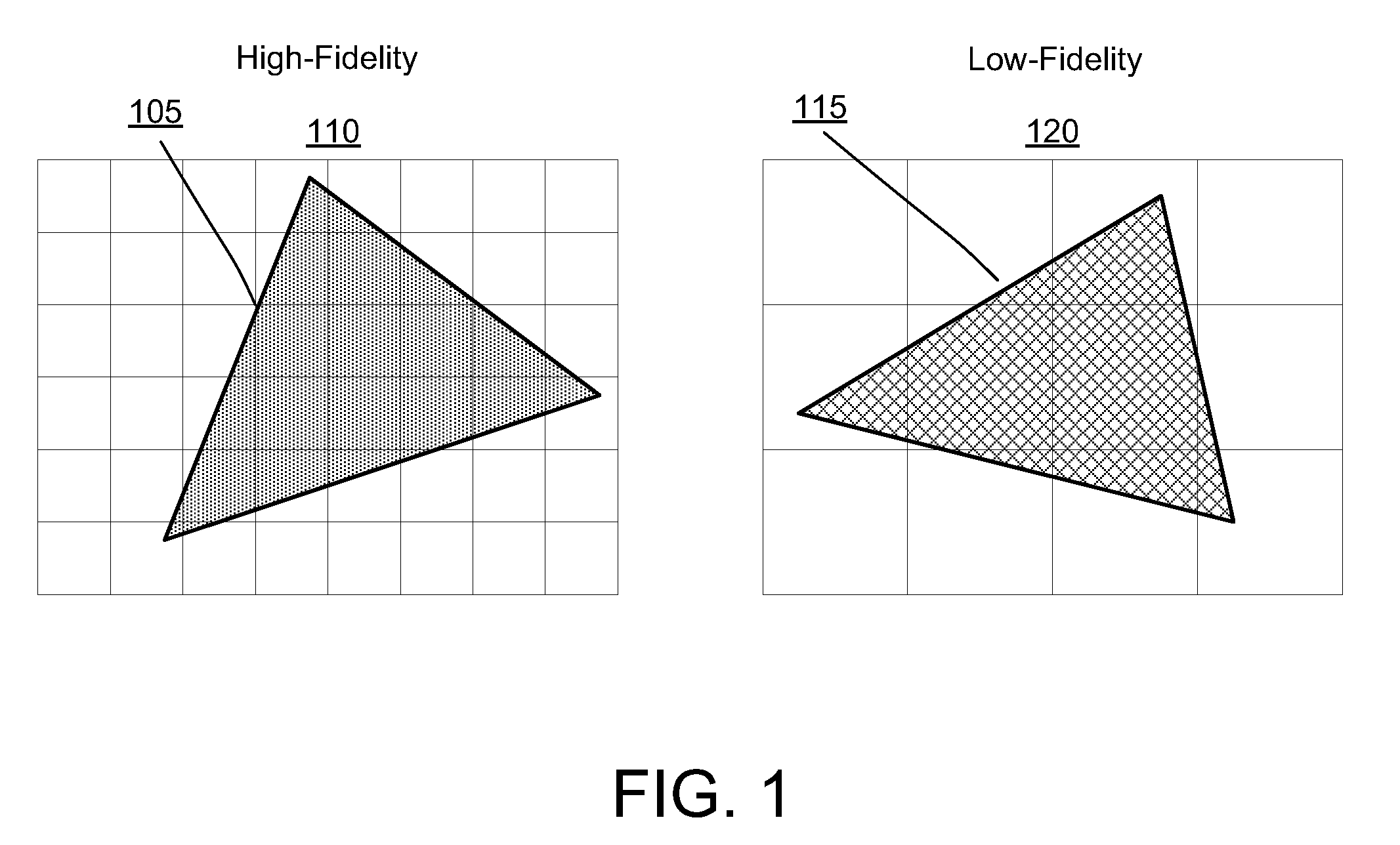Adaptive rendering of indistinct objects
a technology of indistinct objects and primitives, applied in the field of computer generated imagery or graphics, can solve the problems of system overloaded, large cost, and alter the number of primitives that are rendered and not the methodology used
- Summary
- Abstract
- Description
- Claims
- Application Information
AI Technical Summary
Benefits of technology
Problems solved by technology
Method used
Image
Examples
Embodiment Construction
[0020]Before turning to the figures which illustrate the exemplary embodiments in detail, it should be understood that the disclosure is not limited to the details or methodology set forth in the description or illustrated in the figures. It should also be understood that the terminology is for the purpose of description only and should not be regarded as limiting.
[0021]FIG. 1 illustrates an exemplary pixel rendering of a set of polygons. A “high-fidelity” polygon 105 is shown as it overlays a portion of a pixel structure 110. A “low-fidelity” polygon 115 is shown as it overlays a portion of a pixel structure 120, rendered at lower fidelity than the “high-fidelity” polygon 105. In some embodiments, pixels in the pixel structures rendering lower fidelity polygons may be larger than pixels in the pixel structures rendering higher fidelity polygons. As illustrated, the pixels shown in the pixel structure 120 are twice as large both horizontally and vertically than the pixels shown in t...
PUM
 Login to View More
Login to View More Abstract
Description
Claims
Application Information
 Login to View More
Login to View More - R&D
- Intellectual Property
- Life Sciences
- Materials
- Tech Scout
- Unparalleled Data Quality
- Higher Quality Content
- 60% Fewer Hallucinations
Browse by: Latest US Patents, China's latest patents, Technical Efficacy Thesaurus, Application Domain, Technology Topic, Popular Technical Reports.
© 2025 PatSnap. All rights reserved.Legal|Privacy policy|Modern Slavery Act Transparency Statement|Sitemap|About US| Contact US: help@patsnap.com



